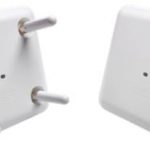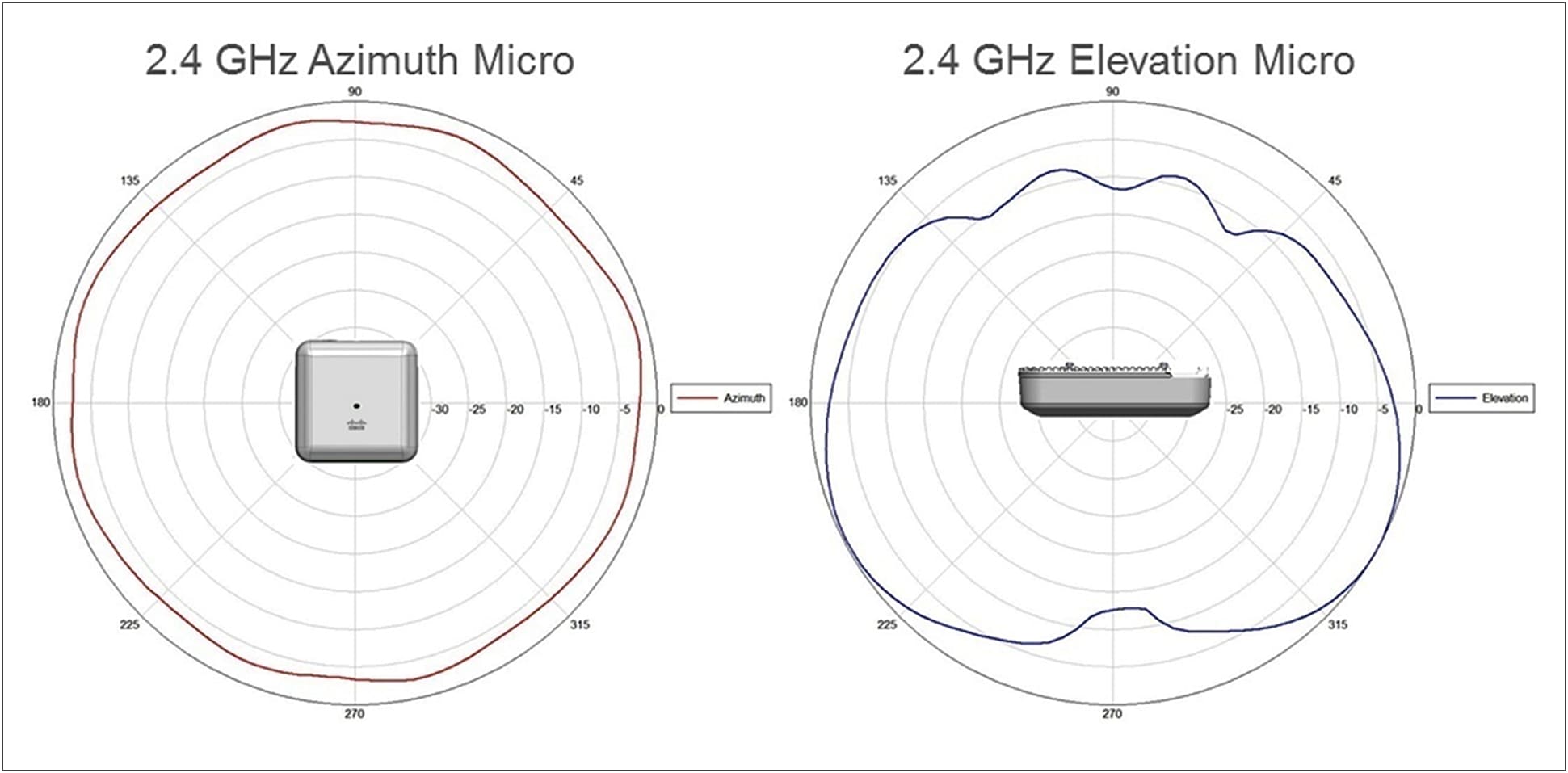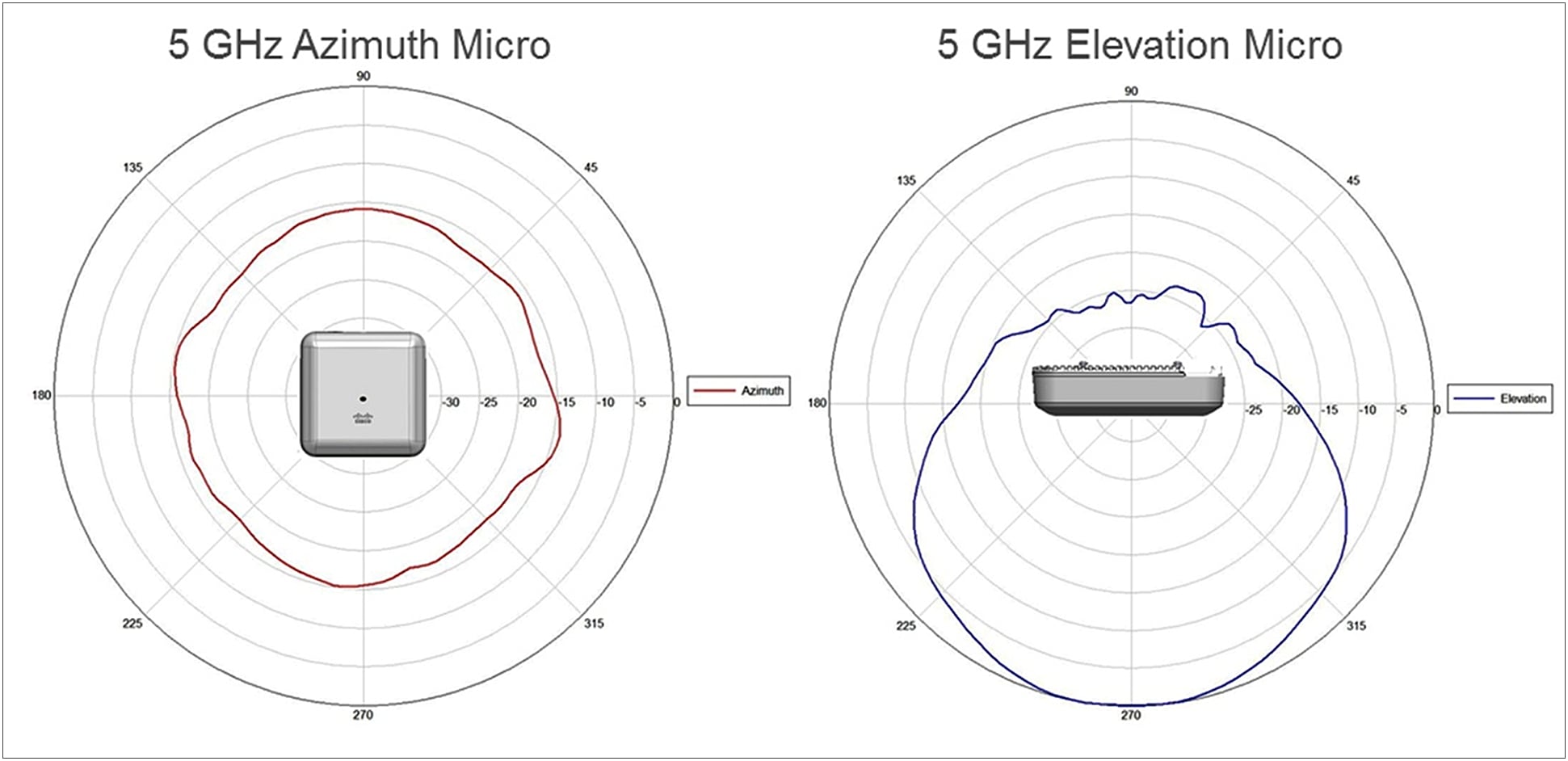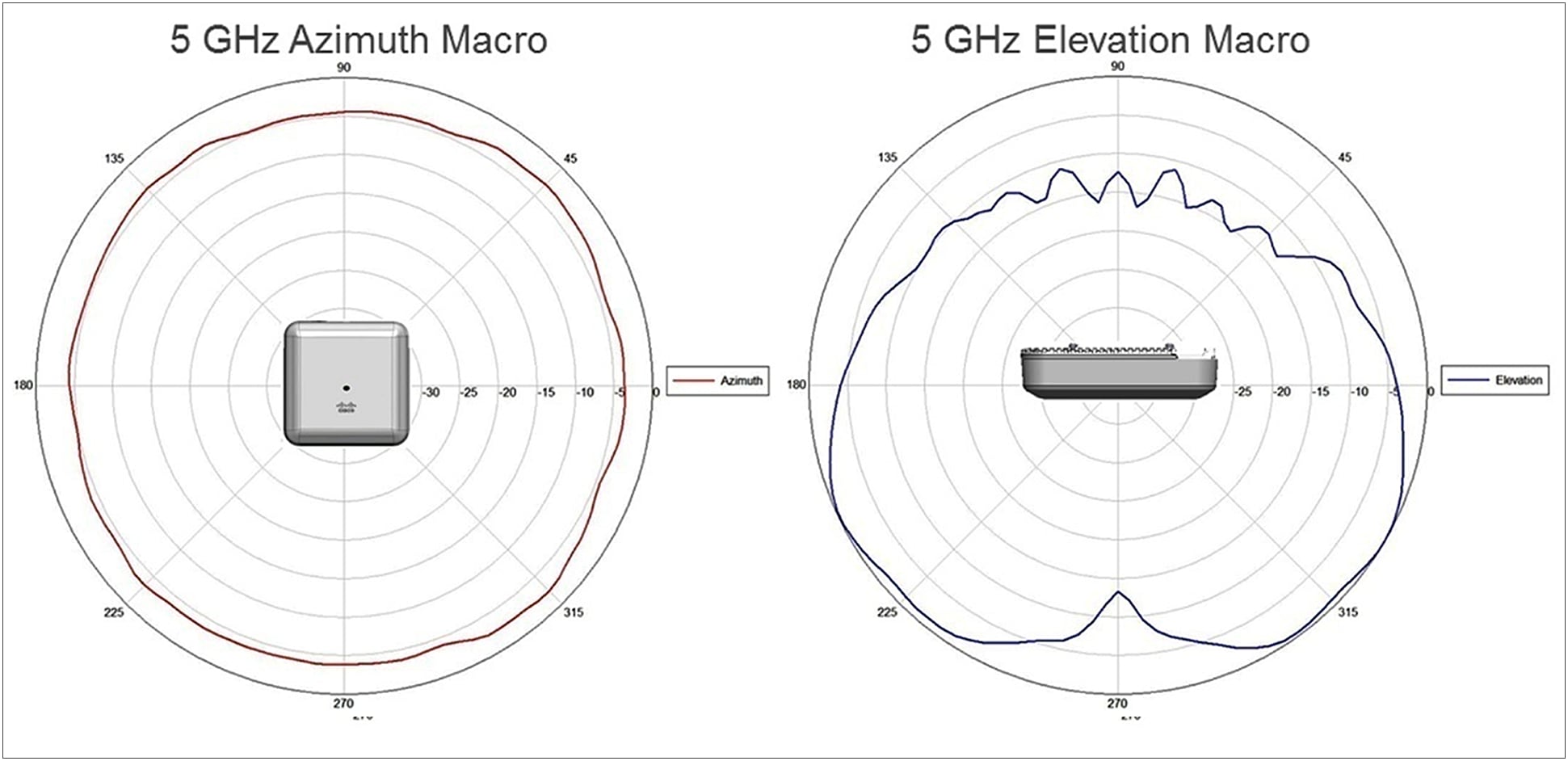Cisco Aironet 2800 Series Access Points Data Sheet
This entry was posted on 29 July 2016.

สินค้าที่เกี่ยวข้อง
บทความที่เกี่ยวข้อง
Features and Benefits
|
Feature |
Benefit |
|
802.11ac Wave 2 support |
Provides a theoretical connection rate of up to 2.6 Gbps per radio—roughly double the rates offered by today’s high-end 802.11ac access points. |
|
High Density Experience (HDX) |
Best-in-class RF architecture, which provides high-performance coverage for a high density of client devices, giving the end user a seamless wireless experience. HDX includes features such as custom hardware in 802.11ac Wave 2 radios, Cisco CleanAir®, ClientLink 4.0, cross-access point noise reduction, and an optimized client roaming experience. |
|
Multiuser Multiple-Input Multiple-Output (MU‑MIMO) technology |
Supporting three spatial streams, MU-MIMO enables access points to split spatial streams between client devices, to maximize throughput. |
|
Flexible Radio Assignment |
Allows the access points to intelligently determine the operating mode of serving radios based on the RF environment. The access points can operate in the following modes: ● 2.4-GHz and 5-GHz mode: One radio will serve clients in 2.4-GHz mode, while the other serves clients in 5-GHz mode.
● Dual 5-GHz mode: Both radios inside the access point operate on the 5-GHz band, maximizing the benefits of 802.11ac Wave 2 and increasing client device capacity.
● Security Monitoring and 5-GHz mode, One radio will serve 5-GHz clients, while the other is scanning the full spectrum for wIPS attackers, CleanAir interferers, and rogue devices.
|
|
Dual 5-GHz radio support |
Enables both radios to operate in 5-GHz client serving mode, allowing an industry-leading 5.2 Gbps (2 x 2.6 Gbps) over-the-air speeds while increasing client capacity. |
|
Smart antenna connector |
An intelligent second physical antenna connector is included on 2800 Series models with an external antenna. This connector provides advanced network design flexibility for high-density and large open-area environments such as auditoriums, convention centers, libraries, cafeterias, and arenas/stadiums, allowing two sets of antennas to be connected and active on a single access point. |
|
160-MHz channel support |
Supporting channels up to 160 MHz wide, Dynamic Bandwidth Selection allows the access point to dynamically switch between 20-, 40-, 80-, and 160-MHz channels, depending on the RF channel conditions, providing the industry’s best-performing wireless network. |
|
Optimized access point roaming |
Helps ensure that client devices associate with the access point in their coverage range that offers the fastest data rate available. |
|
Zero Impact Application Visibility and Control* |
Uses dedicated hardware acceleration to improve the performance of line-speed applications such as Application Visibility and Control. |
|
Auto Link Aggregation (LAG) support |
802.3ad (LACP) compliant, allowing both Gigabit Ethernet interfaces to automatically LAG, increasing overall throughput to the access point. |
|
ClientLink 4.0 |
Cisco ClientLink 4.0 technology to improve downlink performance to all mobile devices, including one-, two-, and three-spatial-stream devices on 802.11a/b/g/n/ac while improving battery life on mobile devices such as smartphones and tablets. |
|
CleanAir 160 MHz* |
Cisco CleanAir technology, enhanced with 160-MHz channel support, provides proactive, high-speed spectrum intelligence across 20-, 40-, 80-, or 160-MHz-wide channels to combat performance problems due to wireless interference. |
Product Specifications
|
Item |
Specification |
|||||||
|
Part numbers |
Cisco Aironet 2800i Access Point: Indoor environments, with internal antennas ● AIR-AP2802I-x-K9: Dual-band, controller-based 802.11a/g/n/ac
● AIR-AP2802I-xK910: Eco-pack (dual-band 802.11a/g/n/ac) 10 quantity access points
Cisco Aironet 2800i Access Point Configurable: Indoor environments, with internal antennas ● AIR-AP2802I-x-K9C: Dual-band, controller-based 802.11a/g/n/ac, configurable
● AIR-AP2802I-xK910C: Eco-pack (dual-band 802.11a/g/n/ac) 10 quantity access points, configurable
Cisco Aironet 2800e Access Point: Indoor, challenging environments, with external antennas ● AIR-AP2802E-x-K9: Dual-band controller-based 802.11a/g/n/ac
● AIR-AP2802E-xK910: Eco-pack (dual-band 802.11a/g/n/ac), 10 quantity access points
Cisco Aironet 2800e Access Point Configurable: Indoor, challenging environments, with external antennas ● AIR-AP2802E-x-K9C: Dual-band controller-based 802.11a/g/n/ac, configurable
● AIR-AP2802E-xK910C: Eco-pack (dual-band 802.11a/g/n/ac), 10 quantity access points, configurable
Regulatory domains: (x = regulatory domain) Customers are responsible for verifying approval for use in their individual countries. To verify approval and to identify the regulatory domain that corresponds to a particular country, visithttp://www.cisco.com/go/aironet/compliance. Not all regulatory domains have been approved. As they are approved, the part numbers will be available on the Global Price List. Cisco Wireless LAN Services ● AS-WLAN-CNSLT:Cisco Wireless LAN Network Planning and Design Service
● AS-WLAN-CNSLT:Cisco Wireless LAN 802.11n Migration Service
● AS-WLAN-CNSLT:Cisco Wireless LAN Performance and Security Assessment Service
|
|||||||
|
Software |
Cisco Unified Wireless Network Software Release TBD or later |
|||||||
|
Supported wireless LAN controllers |
● Cisco 2500 Series Wireless Controllers, Cisco Wireless Controller Module for ISR G2, Cisco Wireless Services Module 2 (WiSM2) for Catalyst® 6500 Series Switches, Cisco 5500 Series Wireless Controllers, Cisco Flex® 7500 Series Wireless Controllers, Cisco 8500 Series Wireless Controllers, Cisco Virtual Wireless Controller
● Cisco Catalyst 3850 Series Switches, Cisco Catalyst 3650 Series Switches
|
|||||||
|
802.11n version 2.0 (and related) capabilities |
● 4x4 MIMO with three spatial streams
● Maximal ratio combining (MRC)
● 802.11n and 802.11a/g beamforming
● 20- and 40-MHz channels
● PHY data rates up to 450 Mbps (40 MHz with 5 GHz)
● Packet aggregation: A-MPDU (Tx/Rx), A-MSDU (Tx/Rx)
● 802.11 dynamic frequency selection (DFS)
● Cyclic shift diversity (CSD) support
|
|||||||
|
802.11ac Wave 1 capabilities |
● 4x4 MIMO with three spatial streams
● MRC
● 802.11ac beamforming
● 20-, 40-, and 80-MHz channels
● PHY data rates up to 1.3 Gbps (80 MHz in 5 GHz)
● Packet aggregation: A-MPDU (Tx/Rx), A-MSDU (Tx/Rx)
● 802.11 DFS
● CSD support
|
|||||||
|
802.11ac Wave 2 capabilities |
● 4x4 MU-MIMO with three spatial streams
● MRC
● 802.11ac beamforming
● 20-, 40-, 80, 160-MHz channels
● PHY data rates up to 5.2 Gbps
● Packet aggregation: A-MPDU (Tx/Rx), A-MSDU (Tx/Rx)
● 802.11 DFS
● CSD support
|
|||||||
|
Integrated antenna |
Flexible radio (either 2.4 GHz or 5 GHz) ● 2.4 GHz, gain 4 dBi, internal antenna, omnidirectional in azimuth
● 5 GHz, gain 6 dBi, internal directional antenna, elevation plane beamwidth 90°
Dedicated 5-GHz radio ● 5 GHz, gain 5 dBi, internal antenna, omnidirectional in azimuth
|
|||||||
|
External antenna (sold separately) |
● 2802e Series access points are certified for use with antenna gains up to 6 dBi (2.4 GHz and 5 GHz)
● Cisco offers the industry's broadest selection ofantennas, delivering optimal coverage for a variety of deployment scenarios
|
|||||||
|
Smart antenna connector |
● Available on the 2802e Series access points only
● Requires the AIR-CAB002-DART-R= 2 ft smart antenna connector to RP-TNC connectors to connect a second antenna to the access point
● Required when running the flexible radio as either a second 5-GHz serving radio or Wireless Security Monitoring radio
|
|||||||
|
Interfaces |
● 2802I/E
◦ 2x100/1000BASE-T autosensing (RJ-45)
● Management console port (RJ-45)
|
|||||||
|
Indicators |
● Status LED indicates boot loader status, association status, operating status, boot loader warnings, boot loader errors
|
|||||||
|
Dimensions (W x L x H) |
● Access point (without mounting brackets): 2802I: 8.66” x 8.68” x 2.17”, 2802E: 8.66” x 8.77” x 2.50”
|
|||||||
|
Weight |
Cisco Aironet 2802i ● 3.53 lb (1.6 kg)
Cisco Aironet 2802e ● 4.6 lb (2.09 kg)
|
|||||||
|
Input power requirements |
● 802.3at PoE+, Cisco Universal PoE (Cisco UPOE®)
● 802.3at power injector (AIR-PWRINJ6=)
|
|||||||
|
Power draw |
● 26W at the PSE with all features enabled except for the USB 2.0 port
● 30W at the PSE with the USB 2.0 port enabled
|
|||||||
|
Environmental |
Cisco Aironet 2802i ● Nonoperating (storage) temperature: -22° to 158°F (-30° to 70°C)
● Nonoperating (storage) altitude test: 25˚C, 15,000 ft.
● Operating temperature: 32° to 104°F (0° to 40°C)
● Operating humidity: 10% to 90% (noncondensing)
● Operating altitude test: 40˚C, 9843 ft.
Cisco Aironet 2802e ● Nonoperating (storage) temperature: -22° to 158°F (-30° to 70°C)
● Nonoperating (storage) altitude test: 25˚C, 15,000 ft.
● Operating temperature: -4° to 122°F (-20° to 50°C)
● Operating humidity: 10% to 90% (noncondensing)
● Operating altitude test: 40˚C, 9843 ft.
|
|||||||
|
System memory |
● 1024 MB DRAM
● 256 MB flash
|
|||||||
|
Warranty |
Limited lifetime hardware warranty |
|||||||
|
Available transmit power settings |
2.4 GHz ● 23 dBm (200 mW)
● 20 dBm (100 mW)
● 17 dBm (50 mW)
● 14 dBm (25 mW)
● 11 dBm (12.5 mW)
● 8 dBm (6.25 mW)
● 5 dBm (3.13 mW)
● 2 dBm (1.56 mW)
|
5 GHz ● 23 dBm (200 mW)
● 20 dBm (100 mW)
● 17 dBm (50 mW)
● 14 dBm (25 mW)
● 11 dBm (12.5 mW)
● 8 dBm (6.25 mW)
● 5 dBm (3.13 mW)
● 2 dBm (1.56 mW)
|
||||||
|
Frequency band and 20-MHz operating channels |
A (A regulatory domain): ● 2.412 to 2.462 GHz; 11 channels
● 5.180 to 5.320 GHz; 8 channels
● 5.500 to 5.700 GHz; 8 channels
(excludes 5.600 to 5.640 GHz)
● 5.745 to 5.825 GHz; 5 channels
B (B regulatory domain): ● 2.412 to 2.462 GHz; 11 channels
● 5.180 to 5.320 GHz; 8 channels
● 5.500 to 5.720 GHz; 12 channels
● 5.745 to 5.825 GHz; 5 channels
C (C regulatory domain): ● 2.412 to 2.472 GHz; 13 channels
● 5.745 to 5.825 GHz; 5 channels
D (D regulatory domain): ● 2.412 to 2.462 GHz; 11 channels
● 5.180 to 5.320 GHz; 8 channels
● 5.745 to 5.825 GHz; 5 channels
E (E regulatory domain): ● 2.412 to 2.472 GHz; 13 channels
● 5.180 to 5.320 GHz; 8 channels
● 5.500 to 5.700 GHz; 8 channels
(excludes 5.600 to 5.640 GHz)
F (F regulatory domain): ● 2.412 to 2.472 GHz; 13 channels
● 5.745 to 5.805 GHz; 4 channels
G (G regulatory domain): ● 2.412 to 2.472 GHz; 13 channels
● 5.745 to 5.825 GHz; 5 channels
H (H regulatory domain): ● 2.412 to 2.472 GHz; 13 channels
● 5.150 to 5.350 GHz; 8 channels
● 5.745 to 5.825 GHz; 5 channels
|
I (I regulatory domain): ● 2.412 to 2.472 GHz; 13 channels
● 5.180 to 5.320 GHz; 8 channels
K (K regulatory domain): ● 2.412 to 2.472 GHz; 13 channels
● 5.180 to 5.320 GHz; 8 channels
● 5.500 to 5.620 GHz; 7 channels
● 5.745 to 5.805 GHz; 4 channels
N (N regulatory domain): ● 2.412 to 2.462 GHz; 11 channels
● 5.180 to 5.320 GHz; 8 channels
● 5.745 to 5.825 GHz; 5 channels
Q (Q regulatory domain): ● 2.412 to 2.472 GHz; 13 channels
● 5.180 to 5.320 GHz; 8 channels
● 5.500 to 5.700 GHz; 11 channels
R (R regulatory domain): ● 2.412 to 2.472 GHz; 13 channels
● 5.180 to 5.320 GHz; 8 channels
● 5.660 to 5,805 GHz; 7 channels
S (S regulatory domain): ● 2.412 to 2.472 GHz; 13 channels
● 5.180 to 5.320 GHz; 8 channels
● 5.500 to 5.700 GHz;, 11 channels
● 5.745 to 5.825 GHz; 5 channels
T (T regulatory domain): ● 2.412 to 2.462 GHz; 11 channels
● 5.280 to 5.320 GHz; 3 channels
● 5.500 to 5.700 GHz; 8 channels
(excludes 5.600 to 5.640 GHz)
● 5.745 to 5.825 GHz; 5 channels
Z (Z regulatory domain): ● 2.412 to 2.462 GHz; 11 channels
● 5.180 to 5.320 GHz; 8 channels
● 5.500 to 5.700 GHz; 8 channels
(excludes 5.600 to 5.640 GHz)
● 5.745 to 5.825 GHz; 5 channels
|
||||||
|
Note: Customers are responsible for verifying approval for use in their individual countries. To verify approval and to identify the regulatory domain that corresponds to a particular country, visithttp://www.cisco.com/go/aironet/compliance |
||||||||
|
Maximum number of nonoverlapping channels |
2.4 GHz ● 802.11b/g:
◦ 20 MHz: 3
● 802.11n:
◦ 20 MHz: 3
|
5 GHz ● 802.11a:
◦ 20 MHz: 25 FCC, 16 EU
● 802.11n:
◦ 20 MHz: 25 FCC, 16 EU
◦ 40 MHz: 12 FCC, 7 EU
◦ 20 MHz: 25 FCC, 16 EU
◦ 40 MHz: 12 FCC, 7 EU
◦ 80 MHz: 6 FCC, 3 EU
◦ 160 MHz 2 FCC, 1 EU
|
||||||
|
Note: This varies by regulatory domain. Refer to the product documentation for specific details for each regulatory domain. |
||||||||
|
Compliance standards |
◦ UL 60950-1
◦ CAN/CSA-C22.2 No. 60950-1
◦ UL 2043
◦ IEC 60950-1
◦ EN 60950-1
◦ EN 50155
● Radio approvals:
◦ FCC Part 15.107, 15.109, 15.247, 15.407, 14-30
◦ RSS-247 (Canada)
◦ EN 300.328, EN 301.893 (Europe)
◦ ARIB-STD 66 (Japan)
◦ ARIB-STD T71 (Japan)
◦ EMI and susceptibility (Class B)
◦ ICES-003 (Canada)
◦ VCCI (Japan)
◦ EN 301.489-1 and -17 (Europe)
◦ EN 60601-1-2 EMC requirements for the Medical Directive 93/42/EEC
● IEEE standards:
◦ IEEE 802.11a/b/g, 802.11n, 802.11h, 802.11d
◦ IEEE 802.11ac
● Security:
◦ 802.11i, Wi-Fi Protected Access 2 (WPA2), WPA
◦ 802.1X
◦ Advanced Encryption Standards (AES)
● Extensible Authentication Protocol (EAP) types:
◦ EAP-Transport Layer Security (TLS)
◦ EAP-Tunneled TLS (TTLS) or Microsoft Challenge Handshake Authentication Protocol Version 2 (MCSHAPv2)
◦ Protected EAP (PEAP) v0 or EAP-MSCHAPv2
◦ EAP-Flexible Authentication via Secure Tunneling (FAST)
◦ PEAP v1 or EAP-Generic Token Card (GTC)
◦ EAP-Subscriber Identity Module (SIM)
● Multimedia:
◦ Wi-Fi Multimedia (WMM)
● Other:
◦ FCC Bulletin OET-65C
◦ RSS-102
|
|||||||
|
Data rates supported |
802.11b: 1, 2, 5.5, and 11 Mbps |
|||||||
|
802.11a/g: 6, 9, 12, 18, 24, 36, 48, and 54 Mbps |
||||||||
|
802.11n HT20: 6.5 to 216.7 Mbps (MCS0 to MCS23) |
||||||||
|
802.11n HT40: 13.5 to 450 Mbps (MCS0 to MCS23) |
||||||||
|
802.11ac VHT20: 6.5 to 288.9 Mbps (MCS0 to 8 – SS 1, MCS0 to 9 – SS 2 and 3) |
||||||||
|
802.11ac VHT40: 13.5 to 600 Mbps (MCS0 to 9 – SS 1 to 3) |
||||||||
|
802.11ac VHT80: 29.3 to 1300 Mbps (MCS0 to 9 – SS 1 to 3) |
||||||||
|
802.11ac VHT160: 58.5 to 2304 Mbps (MCS0 to 9 – SS 1 and 2, MCS0 to 8 – SS 3) |
||||||||
|
Transmit Power and Receive Sensitivity |
||||||||
|
5-GHz Radio |
2.4-GHz Flexible Radio |
5-GHz Flexible Radio |
||||||
|
Spatial Streams |
Total Tx Power (dBm) |
Rx Sensitivity (dBm) |
Total Tx Power (dBm) |
Rx Sensitivity (dBm) |
Total Tx Power (dBm) |
Rx Sensitivity (dBm) |
||
|
802.11/11b |
||||||||
|
1 Mbps |
1 |
NA |
NA |
23 |
-101 |
NA |
NA |
|
|
11 Mbps |
1 |
NA |
NA |
23 |
-88 |
NA |
NA |
|
|
802.11a/g |
||||||||
|
6 Mbps |
1 |
23 |
-93 |
23 |
-91 |
23 |
-92 |
|
|
24 Mbps |
1 |
23 |
-89 |
23 |
-87 |
23 |
-89 |
|
|
54 Mbps |
1 |
23 |
-81 |
23 |
-77 |
22 |
-80 |
|
|
802.11n HT20 |
||||||||
|
MCS0 |
1 |
23 |
-93 |
23 |
-91 |
23 |
-93 |
|
|
MCS4 |
1 |
23 |
-88 |
23 |
-86 |
23 |
-87 |
|
|
MCS7 |
1 |
23 |
-79 |
23 |
-77 |
22 |
-78 |
|
|
MCS8 |
2 |
23 |
-93 |
23 |
-91 |
21 |
-93 |
|
|
MCS12 |
2 |
23 |
-86 |
23 |
-85 |
23 |
-86 |
|
|
MCS15 |
2 |
23 |
-79 |
23 |
-77 |
21 |
-78 |
|
|
MCS16 |
3 |
23 |
-93 |
23 |
-91 |
23 |
-92 |
|
|
MCS20 |
3 |
23 |
-85 |
23 |
-84 |
22 |
-84 |
|
|
MCS23 |
3 |
23 |
-78 |
23 |
-76 |
18 |
-77 |
|
|
802.11n HT40 |
||||||||
|
MCS0 |
1 |
23 |
-90 |
23 |
-89 |
|||
|
MCS4 |
1 |
23 |
-85 |
23 |
-84 |
|||
|
MCS7 |
1 |
23 |
-76 |
23 |
-75 |
|||
|
MCS8 |
2 |
23 |
-90 |
23 |
-89 |
|||
|
MCS12 |
2 |
23 |
-83 |
23 |
-83 |
|||
|
MCS15 |
2 |
23 |
-76 |
21 |
-76 |
|||
|
MCS16 |
3 |
23 |
-90 |
23 |
-89 |
|||
|
MCS20 |
3 |
23 |
-82 |
23 |
-81 |
|||
|
MCS23 |
3 |
23 |
-75 |
20 |
-74 |
|||
|
802.11ac VHT20 |
||||||||
|
MCS0 |
1 |
23 |
-93 |
23 |
-92 |
|||
|
MCS4 |
1 |
23 |
-88 |
23 |
-87 |
|||
|
MCS7 |
1 |
23 |
-82 |
22 |
-80 |
|||
|
MCS8 |
1 |
23 |
-77 |
21 |
-75 |
|||
|
MCS0 |
2 |
23 |
-93 |
23 |
-91 |
|||
|
MCS4 |
2 |
23 |
-86 |
23 |
-84 |
|||
|
MCS7 |
2 |
23 |
-79 |
21 |
-77 |
|||
|
MCS8 |
2 |
23 |
-75 |
20 |
-73 |
|||
|
MCS9 |
2 |
NA |
NA |
NA |
NA |
|||
|
MCS0 |
3 |
23 |
-93 |
23 |
-91 |
|||
|
MCS4 |
3 |
23 |
-85 |
22 |
-83 |
|||
|
MCS7 |
3 |
23 |
-78 |
20 |
-76 |
|||
|
MCS8 |
3 |
23 |
-74 |
19 |
-72 |
|||
|
MCS9 |
3 |
23 |
-72 |
18 |
-70 |
|||
|
802.11ac VHT40 |
||||||||
|
MCS0 |
1 |
23 |
-90 |
23 |
-89 |
|||
|
MCS4 |
1 |
23 |
-85 |
23 |
-84 |
|||
|
MCS7 |
1 |
23 |
-78 |
22 |
-77 |
|||
|
MCS8 |
1 |
23 |
-75 |
21 |
-73 |
|||
|
MCS9 |
1 |
23 |
-73 |
20 |
-72 |
|||
|
MCS0 |
2 |
23 |
-90 |
23 |
-89 |
|||
|
MCS4 |
2 |
23 |
-83 |
23 |
-82 |
|||
|
MCS7 |
2 |
23 |
-76 |
21 |
-75 |
|||
|
MCS8 |
2 |
23 |
-73 |
20 |
-72 |
|||
|
MCS9 |
2 |
23 |
-71 |
19 |
-69 |
|||
|
MCS0 |
3 |
23 |
-90 |
23 |
-89 |
|||
|
MCS4 |
3 |
23 |
-82 |
23 |
-80 |
|||
|
MCS7 |
3 |
23 |
-74 |
20 |
-73 |
|||
|
MCS8 |
3 |
23 |
-70 |
19 |
-68 |
|||
|
MCS9 |
3 |
23 |
-69 |
18 |
-67 |
|||
|
802.11ac VHT80 |
||||||||
|
MCS0 |
1 |
23 |
-87 |
23 |
-86 |
|||
|
MCS4 |
1 |
23 |
-83 |
23 |
-81 |
|||
|
MCS7 |
1 |
23 |
-76 |
22 |
-74 |
|||
|
MCS8 |
1 |
23 |
-72 |
21 |
-70 |
|||
|
MCS9 |
1 |
23 |
-69 |
20 |
-68 |
|||
|
MCS0 |
2 |
23 |
-87 |
23 |
-86 |
|||
|
MCS4 |
2 |
23 |
-80 |
23 |
-79 |
|||
|
MCS7 |
2 |
23 |
-73 |
21 |
-72 |
|||
|
MCS8 |
2 |
23 |
-69 |
20 |
-68 |
|||
|
MCS9 |
2 |
23 |
-67 |
19 |
-66 |
|||
|
MCS0 |
3 |
23 |
-87 |
23 |
-86 |
|||
|
MCS4 |
3 |
23 |
-77 |
23 |
-77 |
|||
|
MCS7 |
3 |
23 |
-72 |
20 |
-70 |
|||
|
MCS8 |
3 |
23 |
-67 |
19 |
-66 |
|||
|
MCS9 |
3 |
22 |
-65 |
18 |
-64 |
|||
|
802.11ac VHT160 |
||||||||
|
MCS0 |
1 |
23 |
-83 |
23 |
-83 |
|||
|
MCS4 |
1 |
23 |
-78 |
23 |
-78 |
|||
|
MCS7 |
1 |
23 |
-71 |
22 |
-71 |
|||
|
MCS8 |
1 |
23 |
-67 |
21 |
-68 |
|||
|
MCS9 |
1 |
23 |
-66 |
20 |
-66 |
|||
|
MCS0 |
2 |
23 |
-83 |
23 |
-83 |
|||
|
MCS4 |
2 |
23 |
-76 |
23 |
-76 |
|||
|
MCS7 |
2 |
23 |
-69 |
21 |
-69 |
|||
|
MCS8 |
2 |
23 |
-65 |
20 |
-66 |
|||
|
MCS9 |
2 |
23 |
-63 |
19 |
-63 |
|||
|
MCS0 |
3 |
23 |
-82 |
23 |
-83 |
|||
|
MCS4 |
3 |
23 |
-74 |
22 |
-74 |
|||
|
MCS7 |
3 |
23 |
-67 |
20 |
-68 |
|||
|
MCS8 |
3 |
23 |
-62 |
19 |
-62 |
|||








